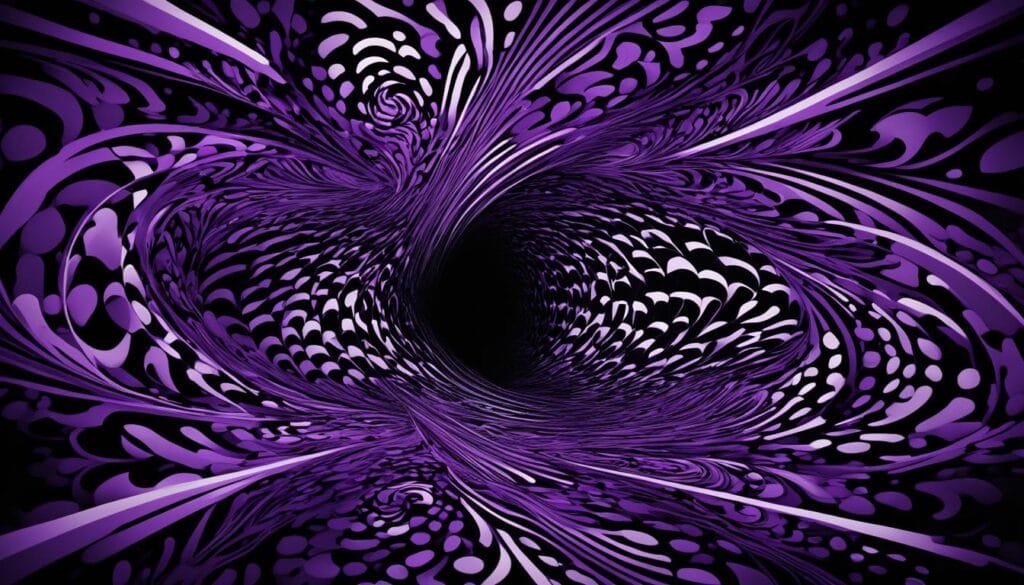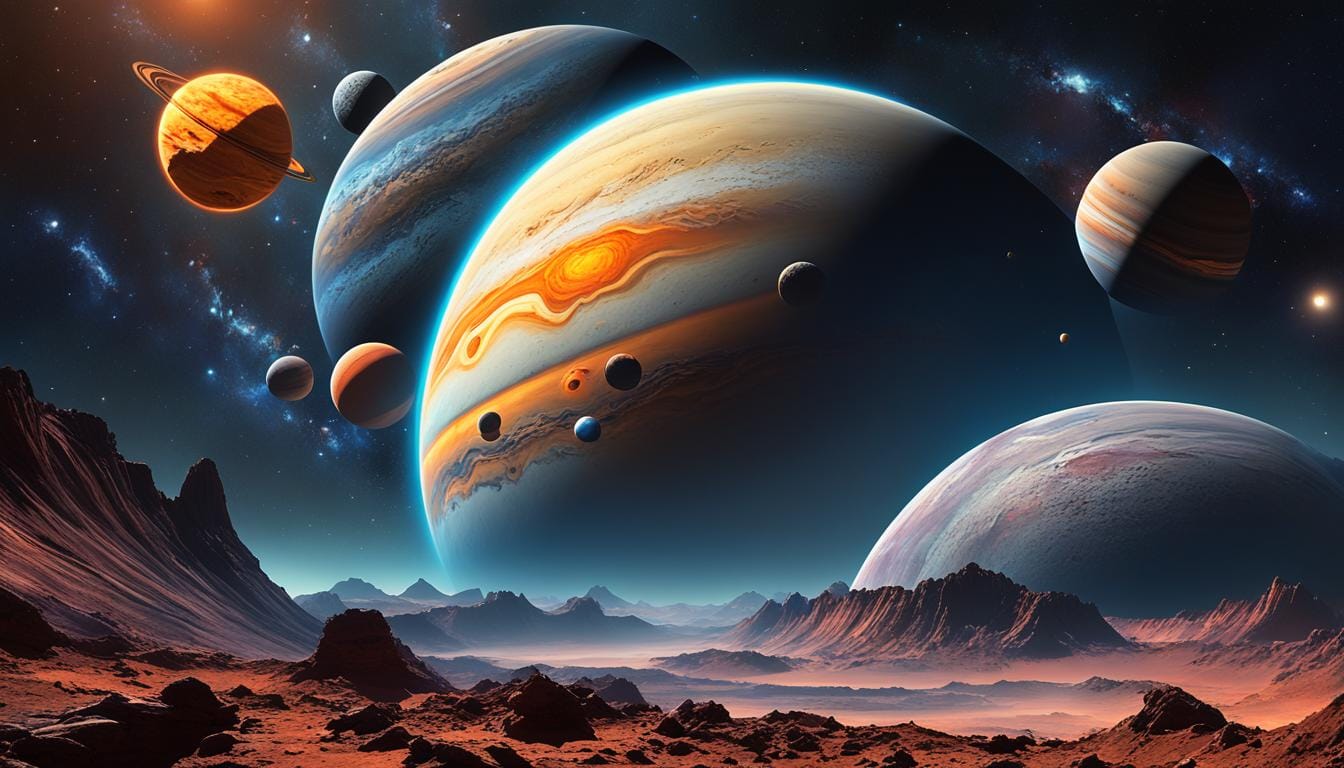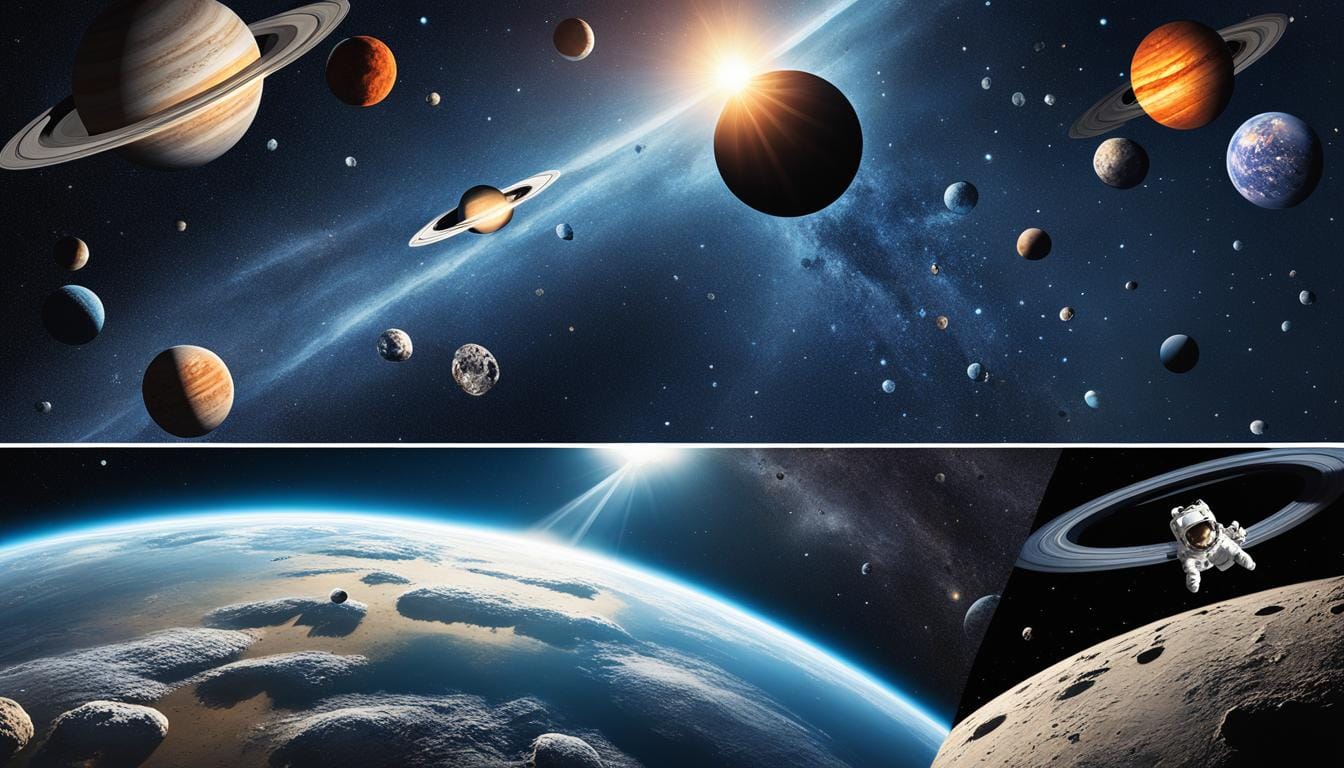The universe has always fascinated humans, leaving many questions unanswered. We wonder about dark matter and if we’re alone in the universe. This article will explore the top 10 mysteries of the universe. We’ll look at these puzzles and the science trying to solve them.
About 25% of the universe is dark matter, invisible and different from what we can see. The Milky Way galaxy makes about one new sun’s worth of stars each year. But, it might not have enough matter to keep doing this forever.
Old stars have less lithium than scientists expected, hinting at missing particles like axions. The Drake Equation from 1961 suggests there could be lots of alien life. But, we haven’t found any proof of aliens yet.
The universe might end in a Big Crunch, a Big Chill, or a Big Rip. These outcomes depend on dark energy and other factors.
The Nature of Dark Matter
Scientists are still trying to figure out what dark matter is. It makes up a big part of the universe but we don’t know much about it. This stuff doesn’t give off or reflect light, making it hard to study.
Exploring the Elusive Substance
Dark matter is very rare, with only about 105 particles in every cubic meter. Finding it is tough, but scientists have come up with clever ways to study it. Gravitational lensing is one method, where they watch how light from far-off galaxies bends.
Studies show that dark matter is the most common type of matter in the universe. It’s way more than the stars, planets, and us combined. Dark matter makes up about 27% of the universe, and the rest is dark energy, another mystery.
Latest Theories and Experiments
Scientists have many theories about dark matter. The top idea is that it could be WIMPs, tiny particles that don’t interact much with us. Other theories include axions, sterile neutrinos, and even tiny black holes from the beginning of the universe.
There are many ways scientists are searching for dark matter. Some try to catch its particles directly, while others look for signs of it in space. They hope to find out what dark matter is, which could help us understand the universe better.

The Existence of Dark Energy
Dark energy is a mysterious force that makes our universe expand faster. It’s a huge part of the cosmos, making up 73% of it. This is much more than the 23% of dark matter and the 4% of regular matter. Scientists found in the 1990s that the universe is getting bigger, not smaller. They think dark energy is what pushes galaxies apart.
One idea about dark energy comes from Einstein’s old idea, the cosmological constant. He thought of it but then forgot about it. Now, scientists are looking into it again to understand dark energy better.
Finding out about dark energy is a big challenge. But, it could give us deep insights into our universe and our place in it. As scientists learn more, they might make big discoveries that change how we see the universe.
| Characteristic | Value |
|---|---|
| Contribution to the Universe | 73% |
| Contribution of Dark Matter | 23% |
| Contribution of Regular Matter | 4% |
| Effect on Universe Expansion | Accelerates Expansion |
| Potential Explanation | Cosmological Constant |

Understanding the dark energy that fills most of the universe and speeds up its expansion is key for modern science. Figuring out the cosmological constant could lead to big discoveries about our universe and our role in it.
The Multiverse Theory
Could our universe be just one of many? The multiverse theory says there might be many universes. Each could have its own laws of physics and properties. This idea comes from theories like the many-worlds interpretation of quantum mechanics and cosmic inflation theory.
These other universes could be very different from ours. They might have different forces, matter, and energy. The multiverse idea makes us think about our understanding of the universe. It makes us wonder if there’s just one theory and why our universe supports life.
Multiple Universes with Varying Laws
The multiverse theory suggests our universe is just one of many. Each realm has its own laws and characteristics. This idea comes from quantum mechanics, where particles act on probabilities, not fixed rules.
The many-worlds interpretation of quantum mechanics says every possible outcome of a quantum event creates a new universe. So, the multiverse could have an endless number of parallel worlds. Each could have different forces, particles, and dimensions.
Implications and Search for Evidence
The multiverse theory changes how we see reality and our place in it. If many universes exist, our laws of physics might not be the same everywhere. They could be special to our universe.
Even though the multiverse is fascinating, scientists haven’t proven it yet. They’re looking for evidence in many ways. This includes studying quantum entanglement, the cosmic microwave background radiation, and higher-dimensional physics. Finding answers about the multiverse keeps scientists and the public interested.
The Ultimate Fate of the Universe
The ultimate fate of our universe is a big mystery in science. Will it keep expanding forever, or will it collapse back in? Scientists have many theories about what might happen, each with interesting ideas.
One idea is the Big Freeze, where the universe keeps getting bigger and colder. It would lose all matter and energy, ending in a vast, empty, cold space. Another idea is the Big Crunch, where gravity wins, making the universe collapse into a tiny point again.
Then there’s the Big Rip, where dark energy makes the universe expand faster and faster. This could tear apart galaxies, stars, and even matter itself.
| Theory | Description | Likelihood |
|---|---|---|
| Big Freeze | Continual expansion and cooling leading to a cold, empty universe | Moderate |
| Big Crunch | Gravity overcoming expansion, leading to a collapse back into a singularity | Low |
| Big Rip | Accelerating dark energy tearing apart the fabric of the universe | Moderate |
As we learn more about dark energy and dark matter, scientists are trying to figure out our universe’s future. The mystery of what’s next for our cosmos is a thrilling area in science.
The Origin of Cosmic Inflation
The theory of cosmic inflation has changed how we see the early universe. It helps explain why the universe is so uniform and flat. This rapid growth happened right after the Big Bang, thanks to a special type of matter.
Alan Guth, Andrei Linde, and Alexei Starobinsky have been key in understanding cosmic inflation. They found that soon after the Big Bang, a unique matter caused the universe to expand very quickly. This matter pushed the universe apart, leading to its fast growth.
This quick expansion helped different parts of the universe talk to each other and reach the same temperature. That’s why the cosmic microwave background looks so even. Some think that when inflation ends, new universes could start, each with its own laws and look, leading to the multiverse idea.
Scientists are still looking into where cosmic inflation came from. They’re exploring new ideas like hybrid inflation and how primordial black holes might have affected the early universe. As they learn more, our understanding of the universe and its beginnings will keep growing.
The Search for Dark Stars
In the early universe, a mysterious type of star called “dark stars” or “Population III stars” is thought to have existed. These stars formed right after the Big Bang. They are key to understanding the universe’s early years.
Dark stars were made only of hydrogen and helium, the first elements in the universe. They were much bigger and less bright than stars today. Scientists want to find these stars to learn about the early universe.
Looking at the cosmic microwave background (CMB) is a good way to search for dark stars. The CMB is the faint glow from the Big Bang. Scientists think dark stars’ signs might be hidden in the CMB. By studying the CMB, they hope to find proof of these old stars.
Finding dark stars could change how we see the early universe. As scientists improve their methods and look at more data, they might solve the mystery of these stars. This could reveal how the universe began.
| Phenomenon | Significance | Current Status |
|---|---|---|
| Dark stars | Provide insights into the early universe and the formation of the first stars | Hypothesized to exist, but not yet directly observed |
| Cosmic microwave background (CMB) | Potential source of evidence for the existence of dark stars | Extensively studied, but no definitive signatures of dark stars have been found yet |
| Population III stars | The first generation of stars in the universe, believed to be composed of only hydrogen and helium | Theoretical models suggest their existence, but they have not been directly observed |
The Puzzle of Fast Radio Bursts
For over a decade, astronomers have been puzzled by Fast Radio Bursts (FRBs). These sudden, bright flashes of radio waves from deep space have caught the attention of scientists. New findings have brought us closer to understanding these mysterious signals.
Investigating Deep Space Signals
Researchers used the Allen Telescope Array to detect 35 FRBs from one source, FRB 20220912A, in 541 hours. Each burst was very short, lasting just a few milliseconds. They showed a wide range of energy and frequency.
They found a “cosmic slide-whistle effect” where the bursts’ center frequency went down over two months. This shows how unpredictable FRBs are. But, it also gave clues that FRB 20220912A might be behind many strong FRBs.
Extraterrestrial or Exotic Astrophysical Phenomena?
Scientists are still trying to figure out where FRBs come from. Some think they might be from aliens, while others believe they could be from strange stars called magnetars. The “slide-whistle effect” in the bursts has made things even more intriguing.
As we keep researching and improving our technology, we’re getting closer to solving the FRB mystery. The Allen Telescope Array has been key in this effort. Upgrades to it will help us learn more about these cosmic signals. Understanding FRBs could reveal secrets of the universe.
Universe’s Biggest Mysteries
The universe is full of mysteries that challenge our understanding. Dark matter makes up about 27% of it, and dark energy about 70%. These mysteries are driving scientists to find answers.
There’s a theory about a multiverse, filled with countless universes with different physics. This idea excites cosmologists. They search for signs of other dimensions and versions of us.
Questions about cosmic inflation and the universe’s future are still unanswered. Scientists are also puzzled by dark stars and fast radio bursts (FRBs). These events release as much energy as our Sun in just three days. The Fermi paradox adds to the mystery, asking why we haven’t found alien life yet.



Amazing and Interesting article. I was curious but this article very much clearer and Interesting